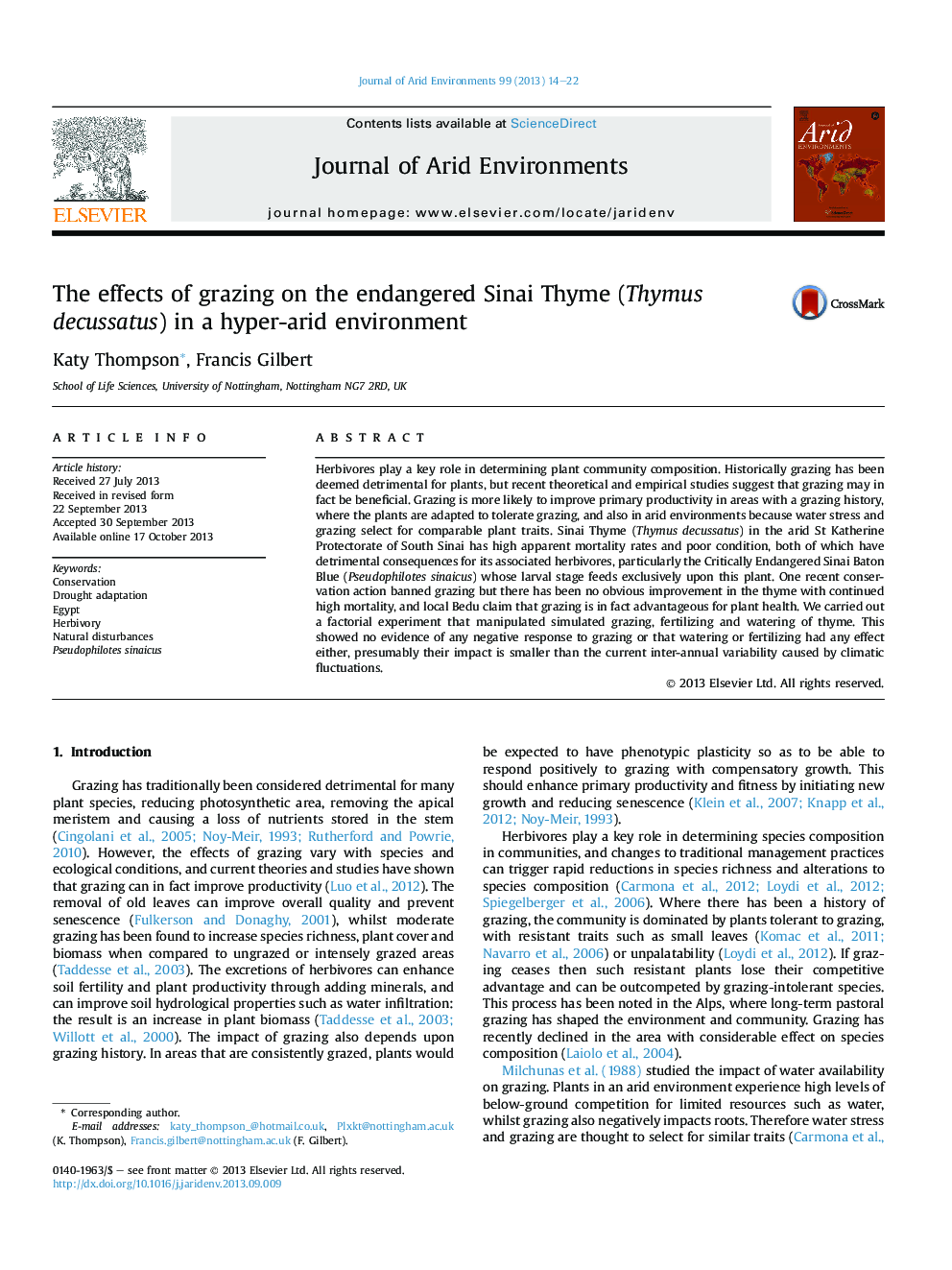| Article ID | Journal | Published Year | Pages | File Type |
|---|---|---|---|---|
| 4393080 | Journal of Arid Environments | 2013 | 9 Pages |
•We examine the vegetative response of the endangered Sinai Thyme to grazing.•Plants protected by a fence were not significantly healthier than those in grazed areas.•There were no major differences amongst grazing treatments.•Grazing within natural variation may not have negative implications on the thyme.
Herbivores play a key role in determining plant community composition. Historically grazing has been deemed detrimental for plants, but recent theoretical and empirical studies suggest that grazing may in fact be beneficial. Grazing is more likely to improve primary productivity in areas with a grazing history, where the plants are adapted to tolerate grazing, and also in arid environments because water stress and grazing select for comparable plant traits. Sinai Thyme (Thymus decussatus) in the arid St Katherine Protectorate of South Sinai has high apparent mortality rates and poor condition, both of which have detrimental consequences for its associated herbivores, particularly the Critically Endangered Sinai Baton Blue (Pseudophilotes sinaicus) whose larval stage feeds exclusively upon this plant. One recent conservation action banned grazing but there has been no obvious improvement in the thyme with continued high mortality, and local Bedu claim that grazing is in fact advantageous for plant health. We carried out a factorial experiment that manipulated simulated grazing, fertilizing and watering of thyme. This showed no evidence of any negative response to grazing or that watering or fertilizing had any effect either, presumably their impact is smaller than the current inter-annual variability caused by climatic fluctuations.
